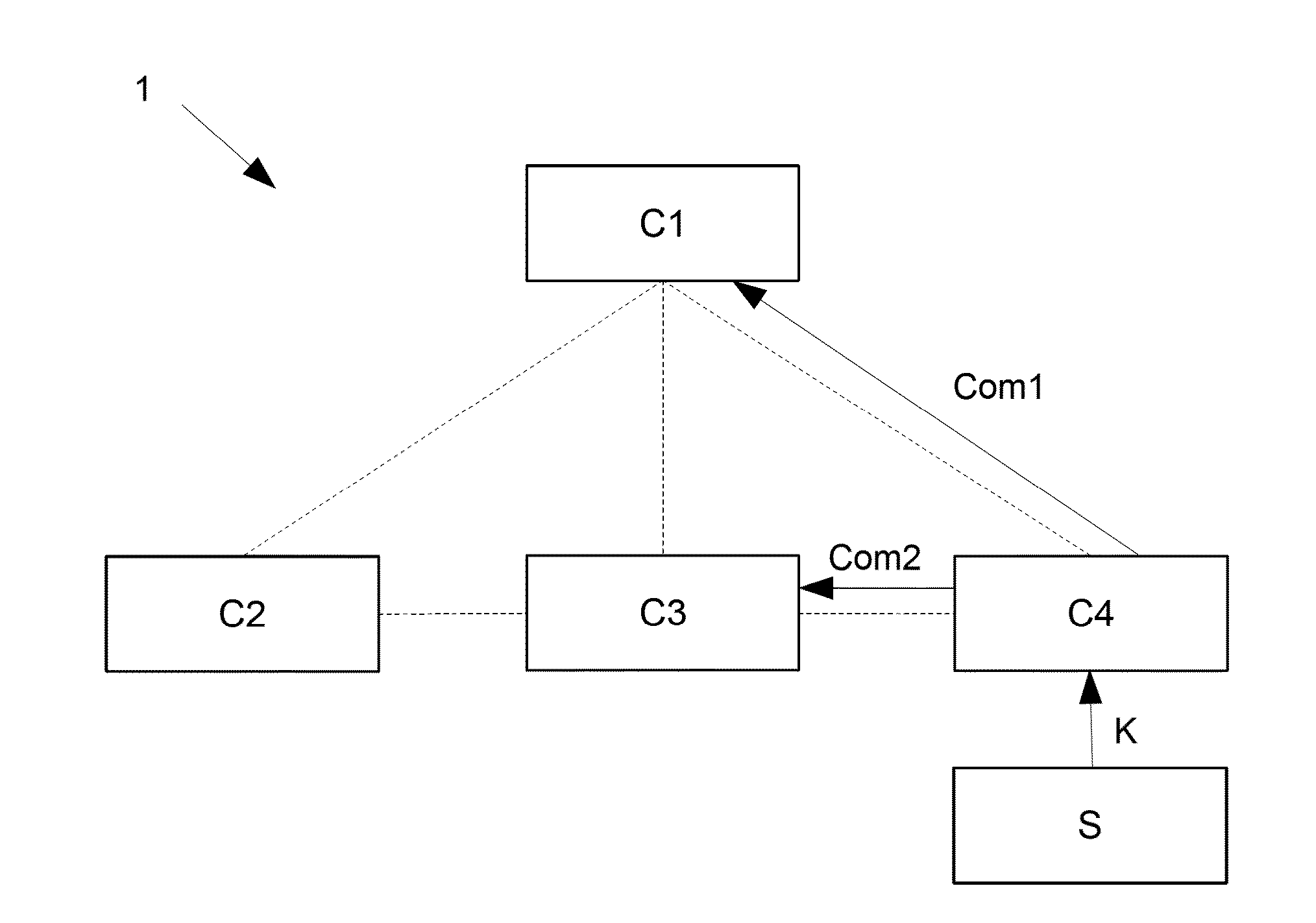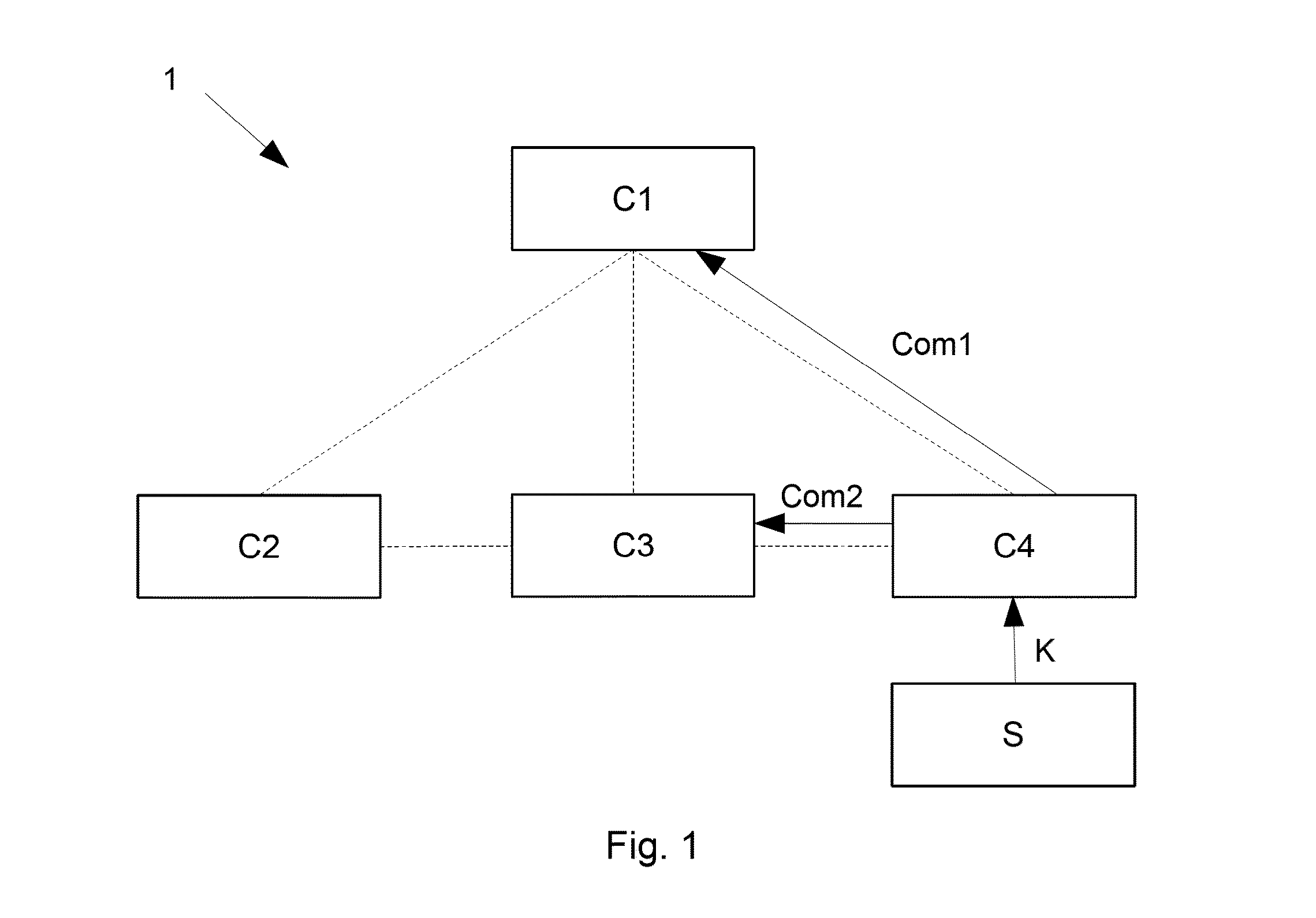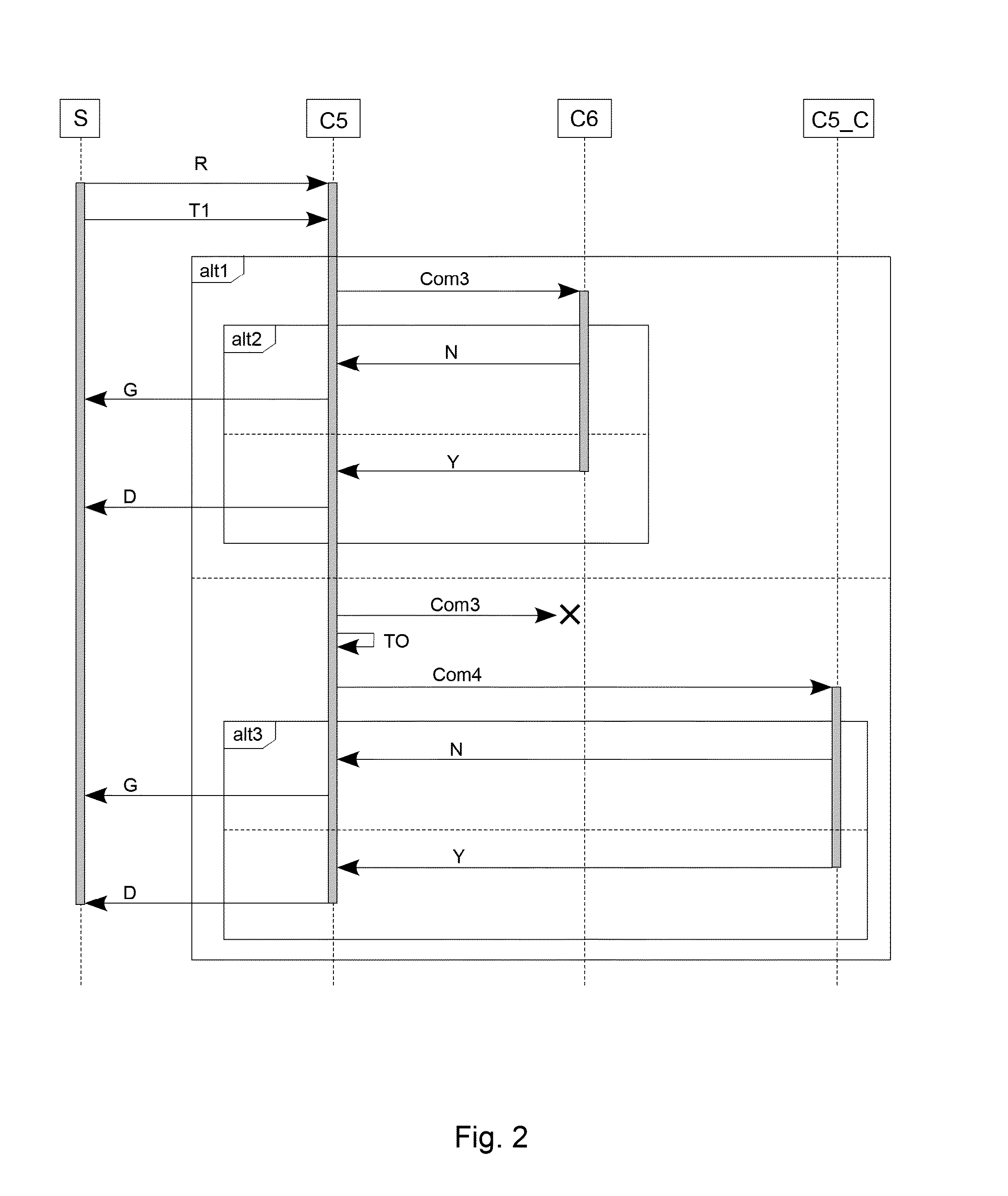Fail-safe distributed access control system
a distributed access control and failure-safe technology, applied in the field of distributed systems, can solve the problems of affecting the performance of the distributed system, slowing down the authorization process, and large number of requests to the component, and achieve the effect of quick, easy and sa
- Summary
- Abstract
- Description
- Claims
- Application Information
AI Technical Summary
Benefits of technology
Problems solved by technology
Method used
Image
Examples
Embodiment Construction
[0083]The reference symbols used in the drawings, and their meanings, are listed in summary form in the list of reference symbols. In principle, identical parts are provided with the same reference symbols in the figures.
[0084]FIG. 1 schematically shows a distributed system 1 which is a physical access control system. The distributed system 1 includes four components C1-C4. In this example, all four components C1-C4 feature a memory which is capable to store policies. If policies are stored in the respective memories, then the policies are stored in a formal policy language. Communication between components means exchange between components and is represented in FIG. 1 as dashed lines between the four components C1-C4. Communication is in this context always a process in two ways: from one component to another and vice versa. The first component C1 features a central storage for policies, which are stored in a centralized way. The second, third and fourth component C2-C4 are PDPs in...
PUM
 Login to View More
Login to View More Abstract
Description
Claims
Application Information
 Login to View More
Login to View More - R&D
- Intellectual Property
- Life Sciences
- Materials
- Tech Scout
- Unparalleled Data Quality
- Higher Quality Content
- 60% Fewer Hallucinations
Browse by: Latest US Patents, China's latest patents, Technical Efficacy Thesaurus, Application Domain, Technology Topic, Popular Technical Reports.
© 2025 PatSnap. All rights reserved.Legal|Privacy policy|Modern Slavery Act Transparency Statement|Sitemap|About US| Contact US: help@patsnap.com



